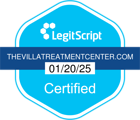Simply put, yes. OxyContin does show up on drug tests, even straightforward 5 panel drug screens.
What is OxyContin?
OxyContin is a narcotic painkiller containing oxycodone. Oxycodone is an opiate which is routinely screened for in drug tests. There is a high rate of abuse associated with OxyContin, and it is detectable in urine.
Why Do Drug Tests Screen for OxyContin?
OxyContin has a high addictive potential, and that is one reason why law enforcement officials and employers routinely test for it. In some cases, testing for OxyContin might be a medical necessity, for eg, if an individual gets admitted to the hospital and the doctors suspect it is due to a drug overdose, then a toxicology screen is necessary. Otherwise the patient may die, if a doctor does not have accurate information about what drugs the patient was using before being admitted, and is therefore unable to diagnose correctly.
Other examples may be when a drug test is ordered as part of a psychiatric treatment, or during opiate treatment to ensure that the patient is only dosing as prescribed. A drug test may also be ordered as a routine when an individual is diagnosed with other medical conditions.
Types of OxyContin Tests
Urine testing for OxyContin is the most commonly prescribed method by doctors. It can also be detected with blood or hair samples, but that’s infrequent. Blood samples only show the drug if it’s been taken immediately prior to taking the sample. However, hair samples can show OxyContin use for several weeks after using it, and such a test is mostly used to ensure an individual who has abused the drug in the past is now staying on course with their treatment.
Typically OxyContin can be detected in urine samples for 1 to 3 days. This is due to the fact that oxycodone hits peak levels within 8 hours in urine. After 1 to 2 days the levels of the drug start to drop off, and low levels may not be detectable. In this case a hair sample may be tested.
The Use and Abuse of OxyContin
There is no doubt that the abuse of OxyContin is dangerous. As mentioned previously, it is a highly addictive drug, and one which can cause painful withdrawal symptoms. It can also cause drug seeking behavior in individuals who have been prescribed it. A tolerance for the drug develops when it is taken in high amounts and over an extended period of time. This leads to the individual taking increased doses, to feel the same effects of the smaller dose. From here, an overdose is a real possibility, as are breathing problems, high blood pressure, a coma, and even death. The adverse side effects of abusing OxyContin are extremely serious when it is taken other than as prescribed
Recovery is hard work but you don’t have to do it alone. Call The Villa to find out how we can support your goals for sober living.







